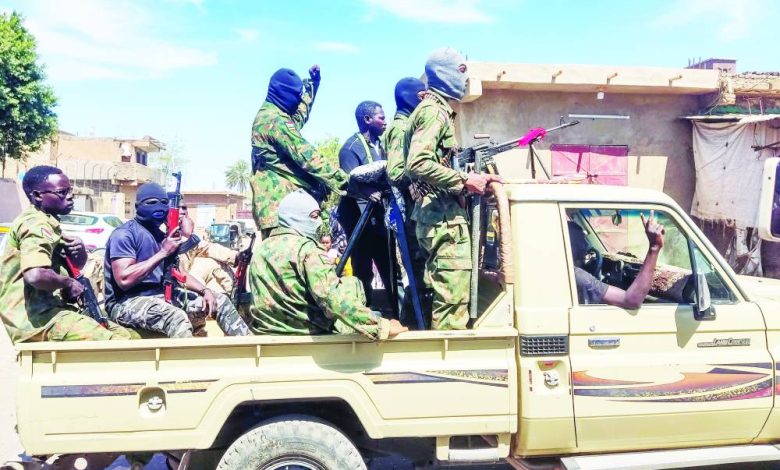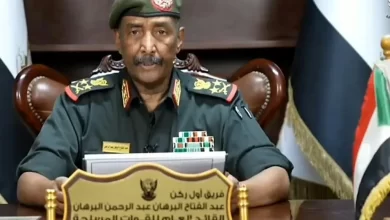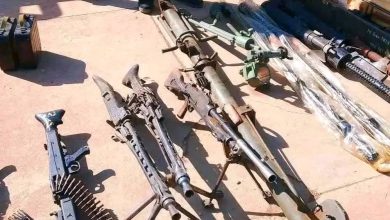The Earth is Moving in Bahri .. Fierce battles on the ground and aviation hand over Janjaweed strongholds

Sudan Events – Amir Abdul Majid
Since the outbreak of the war raging in Sudan more than a year ago, the opinion of most of those who know the structure established by the Rapid Support Forces (RSF) in Khartoum was that the final battle of the capital war would be in Bahri, given the focus of the RSF on the city of Bahri, its establishment of numerous headquarters there, and the establishment of large numbers of militia leaders, supporting military personnel and their families in the city, especially in the east of the Nile, where they established extensions, resided among the population, and owned homes.
Violent battles
The city of Bahri, where the Rapid Support militia deployed immediately after the outbreak of the war and took control of it, remained under its control for a full year that was not devoid of air strikes and intermittent clashes here and there. It also witnessed major battles at the Halfaya Bridge, which connects Omdurman to the city of Bahri, as violent battles took place in this area between the army and the Rapid Support militia, but the city remained in the hands of the Rapid Support militia for nearly a full year until forces from Omdurman entered, and were said to have arrived in the early hours of the current year and were stationed in the city where there are three large army concentrations: the Signal Corps, a base in Al-Kadro, and another in Hattab in the eastern Nile. The forces present in Bahri lost the main supply line by cutting the Shambat Bridge, which provided them with the entry of fighters coming from western Sudan and the entry of weapons and ammunition, a matter that greatly faltered after the cutting of the Shambat Bridge, which linked Umbada to the eastern Nile (Sharq Alneel) , passing through the main command base in Omdurman, with radio and television, which was a link. The link between Imbada and the East Nile, even after the closure of the main crossing point, which is the Shambat Bridge, as the militia continued to transport in smaller numbers and smaller quantities of fighters from Imbada to Bahri across the sea from the radio and television base until the army entered the radio headquarters and seized it, completely cutting off supplies across this line and eliminating the center. Omdurman Command, which has been subjected for more than a year to artillery bombardment from the city of Bahri, a bombardment that affected almost most of the neighborhoods of Omdurman, especially those located on the West Nile line, such as Al-Hattana, Al-Manara, Al-Thawrat, Al-Jarafa, and the areas of Aburov, Bayt Al-Mal, and Al-Mulazmeen, causing deaths and injuries and the displacement of residents.
Bahri is currently witnessing fierce battles that you can notice even from the areas of Omdurman. Airplanes have been circling densely within it and in the sky of Omdurman for more than a week, and the plumes of smoke that almost never disappear from the Bahri sky and are clearly visible in Omdurman are evidence of the ferocity of the battles and their arrival in the center of Bahri. The battles during the last period were concentrated in North Bahri, in the area of the Khartoum Refinery and its surroundings, and in the vicinity of the Signal Corps and Hattab, but they have expanded now, as it can be noted that the battles for three days have been taking place in central Bahri and in the areas east of the sea, as well as in the farms and neighborhoods close to the Nile in Shambat and the branches of Al-Maouna Street and others where plumes of smoke spread.
Libration og neighborhoods
A source currently in Bahri says, “It is not possible to know what is happening in the entire city, but you can almost feel now that the sands of Bahri have moved at once and in all places.” He continued, “From Al-Jili to central Bahri, there are daily clashes and continuous attacks on any Rapid Support gatherings, and thanks to God, we have liberated many neighborhoods in Bahri.” Bahri was not announced because there were some pockets that had to be cleaned first and there were some mines planted by the militia, which booby-trapped some areas, thinking that this would hinder the army and prevent its progress. He continued, “The situation is reassuring after we moved from the defense stage to the attack and we are advancing steadily in Old Bahri.”
Threats and bombing
The army’s advance in some Bahri neighborhoods represents a shift for the armed forces in the course of the battles there, and the Armed Forces Facebook platform confirmed, on Monday, that forces from the army, security services, and regular forces liberated some Khartoum Bahri neighborhoods from Dagalo clan terrorist militias and removed them from citizens homes, property, and public and private facilities, while ethically adhering to the rules of engagement in preserving the state’s infrastructure.
Political researcher and professor of political science, Ahmed Omar Khojali, says that Bahri, in the context of liberating the Sudanese state from the militia, is very important because it is a crossing and concentration point for the forces, and what happened in the Khartoum refinery demonstrates the importance of Bahri to the militia, which has remained there since the outbreak of the war, establishing concentrations, gatherings, quenching and supply centers, and prisons, and has remained there. The refinery supplies it with oil that goes from there to all regions, so the battle will not be easy, especially since they are moving from Bahri to the east of the Nile and to their gatherings outside it in Butana. He added, “The army’s advance now in Bahri will end the supply chain to the Gezira and Khartoum together and stop any threats and bombardment targeting Omdurman,” he added, “We are now seeing heavy aircraft in the Bahri sky,” and he continued, “The army is now in the center of the city, and this is good news.”



